
Mendive. Journal on Education, 21(2), e3387 
Translated from the original in Spanish
Original article
Academic performance in teaching programming: considerations from a gender perspective
Desempeño académico en la enseñanza de la programación: consideraciones desde la perspectiva de género
Desempenho acadêmico no ensino de programação: considerações sob a perspectiva de gênero
Ángela Sarría-Stuart1![]() https://orcid.org/0000-0001-8479-7392
https://orcid.org/0000-0001-8479-7392
Ariel Gómez-Sarría1![]() https://orcid.org/0000-0003-3207-084X
https://orcid.org/0000-0003-3207-084X
Lourdes María Martínez Casanova1![]() https://orcid.org/0000-0002-1789-3891
https://orcid.org/0000-0002-1789-3891
Ibis Suárez Vélez1![]() https://orcid.org/000-0002-9758-0560
https://orcid.org/000-0002-9758-0560
1 University of Cienfuegos "Carlos Rafael Rodríguez", Cienfuegos, Cuba. ![]() asarria@ucf.edu.cu, agomez@ucf.edu.cu, lmmartinez@ucf.edu.cu, ivelez@ucf.edu.cu
asarria@ucf.edu.cu, agomez@ucf.edu.cu, lmmartinez@ucf.edu.cu, ivelez@ucf.edu.cu
| Sarría Stuart, A., Gómez Sarría, A., Martínez Casanova, L., & Suárez Vélez, I. (2023). Academic performance in teaching programming: considerations from the gender perspective. Mendive. Revista de Educación, 21(2), e3387. https://mendive.upr.edu.cu/index.php/MendiveUPR/article/view/3387 |
Received: February 15, 2023
Accepted: February 23, 2023
ABSTRACT
From studies carried out in Cienfuegos, there has been weakness in the gender perspective in the sciences related to Information and Communication Technologies, in addition the incorporation of women in Science, Technology, Engineering and Mathematics careers is insufficient. Therefore, a project has been designed that has as one of its tasks to identify, from the gender perspective, elements that characterize the academic reality of the teaching of programming at the University of Cienfuegos "Carlos Rafael Rodríguez". The communication reports the results of the quantitative-descriptive research carried out that aimed to describe the academic performance in the subjects related to programming, from a gender perspective, in those enrolled in the 2016-2017 academic year and that culminated in 2022 in the Computer Engineering career, from the answer to the questions: In the first five subjects related to programming, do the results of men show any difference compared to that of women? And what is the result of the analysis of the graduation of women with respect to men at the end of the fifth year of the career? The analysis of documents was used as a fundamental method, as well as statistical descriptors such as percentage and medians. The Mann-Whitney U test revealed that women have a lower academic performance than male students, however, the percentage of graduation of women was higher than men.
Keywords: academic performance; gender perspective; programming education; women in programming; women in fields.
RESUMEN
A partir de estudios realizados en Cienfuegos, se ha evidenciado debilidad en la perspectiva de género en las ciencias relacionadas con las Tecnologías de la Información y las Comunicaciones; además, es insuficiente la incorporación de las mujeres en carreras de Ciencia, Tecnología, Ingeniería y Matemáticas. Por lo anterior, se ha diseñado un proyecto que tiene como una de sus tareas identificar, desde la perspectiva de género, elementos que caracterizan la realidad académica de la enseñanza de la programación en la Universidad de Cienfuegos "Carlos Rafael Rodríguez". En la comunicación se informan los resultados de la investigación cuantitativa-descriptiva realizada, que tuvo como objetivo describir el desempeño académico en las asignaturas relacionadas con la programación, desde una perspectiva de género, en los matriculados en el curso 2016-2017 y que culminaron en el 2022 en la carrera Ingeniería Informática; ello, a partir de la respuesta a las interrogantes: ¿en las cinco primeras asignaturas relacionadas con la programación, muestran alguna diferencia los resultados de los hombres respecto al de las mujeres? y ¿qué resultado arroja el análisis del egreso de las mujeres respecto a los hombres al finalizar el quinto año de la carrera? Se empleó como método fundamental el análisis de documentos, así como descriptores estadísticos como porcentaje y medianas. La prueba de U de Mann-Whitney reveló que las mujeres tienen un desempeño académico inferior al de los estudiantes masculinos; sin embargo, fue superior el por ciento de egreso de las mujeres respecto a los hombres.
Palabras clave: desempeño académico; enseñanza de la programación; mujeres en Ciencia; Tecnología; Ingeniería y Matemáticas; mujeres en programación; perspectiva de género.
RESUMO
A partir de estudos realizados em Cienfuegos, foi evidenciada uma fragilidade na perspectiva de gênero nas ciências relacionadas com as Tecnologias de Informação e Comunicação; Além disso, a incorporação de mulheres nas carreiras de Ciência, Tecnologia, Engenharia e Matemática é insuficiente. Portanto, foi desenhado um projeto que tem como uma de suas tarefas identificar, desde uma perspectiva de gênero, elementos que caracterizam a realidade acadêmica do ensino de programação na Universidade "Carlos Rafael Rodríguez" de Cienfuegos. A comunicação dá conta dos resultados da investigação quantitativo-descritiva realizada, que teve como objetivo descrever o desempenho académico em disciplinas relacionadas com a programação, numa perspetiva de género, nos inscritos no ano letivo 2016-2017 e que culminou em 2022 no curso de Informática Carreira de engenharia; Isso se baseia na resposta às perguntas: nas cinco primeiras disciplinas relacionadas à programação, os resultados dos homens apresentam alguma diferença em relação às mulheres? E qual é o resultado da análise da graduação das mulheres em relação aos homens no final do quinto ano da licenciatura? A análise documental foi utilizada como método fundamental, assim como descritores estatísticos como porcentagens e medianas. O teste Mann-Whitney U revelou que as alunas têm desempenho acadêmico inferior ao dos alunos do sexo masculino; no entanto, o percentual de graduação das mulheres foi superior ao dos homens.
Palavras-chave: desempenho acadêmico; ensino de programação; mulheres em Ciência, Tecnologia, Engenharia e Matemática; mulheres na programação; perspectiva de gênero.
INTRODUCTION
Skills in the fields of Science, Technology, Engineering and Mathematics, commonly known as STEM, are fundamental in building society, as they help to address basic challenges of the 2030 Agenda for the Sustainable development. With them, the necessary knowledge is obtained to create inclusive and sustainable societies; This has been recognized by UN Women, the United Nations entity for gender equality and the empowerment of women (UN Women, 2020, p. 7).
The figures are eloquent, as Avendaño & Magaña (2018, p. 155) point out; For example, in Mexico 27% graduate in STEM fields and of that percentage only 8% are women. Other data is revealing: "in the field of ICT, 88% of patents have been registered by teams made up solely of men" (UN Women, 2020, p. 22).
For these reasons, and others not expressed, it is necessary to identify in order to question and not normalize gender roles (prescriptions, norms and expectations of feminine and masculine behavior dictated by society and culture at a specific historical moment) and gender stereotypes (beliefs and social attributions about how each gender should be and how they should behave), thereby contributing to equality between women and men (Nerio, 2019).
Alluding to a study carried out by the United Nations, Amores (2020) highlights that there are three types of segregation of women in science and technology:
The work that is presented is related to the last of the three segregations, more specifically it concerns the Computer Engineering career, so called in Cuba.
In other latitudes it is usually referred to as Systems Engineering. According to Hendel (2017, p. 12), the absence of statistics, disaggregated by sex, or the difficulties that persist in access to justice for children and adolescents, are issues insufficiently included in the media agenda.
Focusing on these last ideas, the objective of this article is to identify how the academic performance of women behaves in relation to men in subjects related to programming in the Computer Engineering career, in the cohort corresponding to 2017-2022 at the University from Cienfuegos "Carlos Rafael Rodríguez".
The communication, in addition to the introduction, has an initial section dedicated to a conceptual and methodological clarification. Next, two corresponding theoretical sections are presented, one, to the participation of women and girls in the Science, Technology, Engineering and Mathematics (STEM) sector in general and the other on informatics, specifically on computer programming and the perspective of gender. It continues with sections dedicated to the methodology, the graphs and tables containing the results, the discussion and final considerations.
The importance of the study lies in the fact that it contributes to document, from science, situations of gender inequality in the field of Higher Education and can favor the definition of more adjusted strategies, to help eliminate them in the Cuban context.
The gender perspective: conceptual and methodological clarification
Given the objective of this work, it is convenient to refer to how various terms associated with the achievement of equal opportunities between women and men are understood in it, as well as its methodological value. According to Nerio (2019, p. 9), the distinction established between the concepts of sex and gender meant an important advance in the fight of women for their rights, since it made it possible to understand that the only biological difference between women and men It is in the physical characteristics and their sexual organs.
In the literature, different definitions of gender can be found. Definitions that are closely related to the historical context in which they have been specified. It is not in the interest of the authors to systematize them.
The definition of gender proposed by Hendel (2017, p. 13) is assumed, who considers it as:
the set of social, cultural, political, psychological, legal and economic characteristics that different societies assign to people in a differentiated way as belonging to men or women. They are sociocultural constructions that vary throughout history and refer to the psychological and cultural traits and specificities that society attributes to what it considers "masculine" or "feminine".
One of the methodological implications of this category is that, being a social construction, it has a concrete historical character; that is, it can evolve or change.
Another of the conceptual tools that the fight for the modification of patriarchal structures in society has been the gender perspective. For Nerio (2019, p. 42) it is synonymous with a gender approach, a gender vision, a gender perspective. Said author defines it as one:
category of analysis that emerged in the academic field that postulates that the sexual, biological and reproductive difference does not explain or justify the existing social inequality between women and men. It is the processes of socialization and hierarchical valuation between the feminine and the masculine that build the existing inequality between the sexes.
The examination of the events, processes and phenomena, from this perspective, leads to recognize that, throughout history, the opportunities in access to education, justice and health, in women, have been unequal to those of men. the men. The methodological value of this analytical category is that it favors the questioning of stereotypes and the development of new content to influence the collective imagination of a society at the service of equality and equity (Hendel, 2017, p. 23).
Looking from a gender perspective helps to better understand the existence of women and men, the relationship between them, since there are many roles assigned to both sexes that are socially constructed, at a specific historical moment, and not determined by the sex they have at birth.
From the analysis of the contributions of Nerio (2019, p. 42-44) on the gender perspective, the following theses emerge: the gender perspective should not be identified with mere policies in favor of women or studies on women, it is much more than that: it is an analysis tool that studies the way in which the sociocultural characteristics assigned to people based on sex convert sexual difference into social inequality; contributes to the analysis and understanding of the similarities and differences between women and men, as well as the characteristics that define them; helps plan actions to act on those gender factors that can be modified and to create the conditions for change that allow progress in the construction of gender equality.
The participation of women and girls in the Science, Technology, Engineering and Mathematics (STEM) sector
At the global and regional level, the UN and other international organizations have undertaken significant efforts to promote gender equality in STEM. Gender equality is conceived in this work as the equal rights, responsibilities and opportunities of women and men, and girls and boys. Equality does not mean that women and men will be equal, but that the rights, responsibilities and opportunities of women and men will not depend on whether they were born with a certain sex. It means that the interests, needs and priorities of women and men are taken into account, recognizing the diversity of different groups of both sexes. It also establishes that it is not a women's issue, but concerns and involves men equally. Equality between women and men is considered a matter of human rights and both a requirement and an indicator of people-centred sustainable development (UN Women, 2020, p. 105).
Said equality is today a chimera, it is unavoidable to point out figures. For example, the global number of female researchers in the field of science is very low (29.3% as the global average rate of female researchers in July 2019). In the STEM fields, the gap is evident at the Higher Education level, only 35% of the students of careers and programs in the STEM field are women (UN Women, 2020). If the analysis is by region, Amores (2020) refers that in Latin America the gap is more evident than in other regions. With the objective of improving the situation of the female gender in the levels of Higher Education in said region, the W-STEM project emerged.
Approaching the data to the context where this study is carried out (the University of Cienfuegos), it is found that women represent 39.8% of the total number of graduates of the master's programs developed at the institution from 1994 to July 2021. Yes, Data is analyzed in relation to initial enrollment, 21.3% of graduates are women and 32.2% men, a proportion that shows the incidence of academic failure in women who enroll. If the STEM field is taken as a dimension, the proportion of women in master's degrees is much more stigmatized in terms of participation and achievement of the degree; the behavior is 24.8% of female graduates against 75.2% of men and 12.6% of female graduates according to the initial enrollment, while men reach 38.2%. In the case of undergraduate, in the enrollment of the 2020-2021 academic year, women in careers in STEM fields constitute 27.6% of those enrolled.
Many studies have been carried out in the world to deepen the causes of such results. For example, Avendaño & Magaña (2018) point out that the factors most associated with the process of choosing a STEM career are: family and family relationships, gender, ethnic group, socioeconomic level, interests, and student self-efficacy.
Gender stereotypes are considered to play an important role in gender inequality. They tend to be maintained, since they respond to the needs of society to preserve the social norms that maintain the status quo. They are characterized by a strong resistance to change and by remaining in force until there is a change in the roles of women and men. They are transmitted from one generation to another through a complex system of interactions in which various socialization agents are involved.
Gender stereotypes contribute to establishing ways of acting and thinking about reality. They influence the decisions of people in the professional order and in daily life. They affect their way of facing a task, holding a position, enjoying the most trivial things of human existence. The reality is that they have had negative effects mainly on women, since traditionally, for example, they bear the burden of raising daughters and sons, caring for the sick and domestic chores.
In relation to gender stereotypes, and given the interest of this study, it is considered valid to resort to the criteria of Amores (2020) when he states that:
It seems evident that despite all these ideas that have prevailed over the years that scientific and technical careers, that is, STEM careers, are only for men, in reality both sexes have the same abilities to be able to pursue to them. Anyone, if they set their minds to it, can be valid to dedicate themselves professionally to the STEM fields, but for this it is necessary to leave behind all these stereotypes and fight for greater equality (p. 5).
Due to the mission, they carry out in society, educational institutions should have a more active role in the eradication of gender stereotypes; however, the practical experience of the authors of this communication reveals that this is not the case, at least in the context where they perform. Neither in the design of the curriculum nor in its practical materialization are their evidence of solid and systematic actions that contribute to the change that is needed in this dimension to achieve more just societies. This reason is another argument in favor of this research.
Based on the International Standard Classification of Education (ISCED), the natural sciences, mathematics and statistics are considered as disciplines related to STEM education; engineering, industry and construction, Information and Communication Technologies (ICT). In relation to ICTs, a precision is made that includes three areas: use of computers, design and administration of networks and databases, and development and analysis of software and applications (UN Women, 2020, p. 17).
In Mora, Coto & Villalobos (2017, p. 3) it can be read that research reveals that the answer to why women do not decide more to study computer science careers is not easy. It is argued that the reasons seem to be linked to socially defined roles. A number of factors are delimited that dissuade them from pursuing this degree:
the image of computing as a male domain; the lack of trust among the students despite their obvious abilities; the lack of female teachers and role models; a culture that does not invite women to dabble in computing and the importance of previous programming experience.
It is unavoidable to refer to other studies regarding the reasons why there are few women in computing. Yansen (2020, p. 241-242) points out that it is not determined by the voluntary nature of the female gender not to participate, nor is it the natural inclination of gender; On the contrary, the literature coincides in pointing out that there are social factors that lead women to distance themselves, to give up trying to access certain economic and labor areas. Without alluding to digital technologies, but which later affects the subsequent decision to link up with computing, is the fact that "among women, a passive use of technologies is encouraged and expected...repetitive and not very experimental...in the bond with games and toys... among boys, attitudes of exploration, construction and overcoming challenges are expected and encouraged".
For these reasons, the authors consider that it is important to continue investigating the ways that make it possible to conquer more women in computer science studies. There are practical actions for this, but scientific research would make more forceful contributions. The history of Informatics includes milestones in which women played a leading role; however, the appropriate strategies to make their lives visible may be greater and better. Certainly, an important role is attributed to the media in this sense, but substantiated studies are required in this regard.
In correspondence with the objective of this study, although up to now some theses have been addressed in relation to the gender perspective in the STEM fields and Computer Science in general, in the section that continues, specificities are offered in relation to an important element of said science: programming.
Computer programming and gender perspective
It is known that, at present, information is one of the pillars of the world economy. Hence the relevance given to IT and more specifically to the software industry, which is very important in view of the digital transformation that is needed in almost all areas of society. Governments need to have state-of-the-art technological tools, for which they need to carry out ambitious IT projects, which helps the country to have a competitive advantage in the international market.
According to the criteria of Sáinz, Arroyo & Castaño (2020), Google, Amazon, Facebook, Microsoft and Apple affirm that any aspect of people's lives will be transformed in the future by tools linked to artificial intelligence and the Machine. Learning, but only 11% of people who code source code are women. The highest percentage corresponds to the United Kingdom, with 54.5%, followed by Spain (9.3 %) and Australia (7.9%). This scarce presence contrasts with the significant role played by different women in the beginnings and development of programming, such as Ada Lovelace (pioneer of the programming language in 1843) to Margaret Hamilton, director of the MIT team that developed the navigation language of Apollo 11; going through the mathematics and logic group, the programmers of the first great ENIAC computer in World War II, to Grace Hopper, who was key to the development of the COBOL language and the second great UNIVAC computer in the 50s.
From the perspective of those who inform this research, it is necessary to have citizens well prepared in computer programming, an activity that is in high demand and difficult. One of the main problems in his teaching process is to achieve in the student body the ability to solve problems and the knowledge of mathematics; maintain their motivation and commitment; as well as finding suitable methods and tools (Ibarra et al., 2021).
This situation was studied in a previous investigation carried out by the authors, in which they presented a systematization of didactic strategies that have been used to try to make the student body more successful in the teaching-learning process of programming. According to Ibarra et al. (2021), "research in teaching computer programming is a topic that has started to gain strength since 2015".
Yansen`s criteria (2020, p. 240) that the relegation of women in the use of digital technologies in daily life in general and in participation in computer work activities in particular, is a topic that has been extensively studied by the international literature. They point out that the gender disparity deepens in computing activities, particularly in the area of software development in which females constitute only 21% of all programmers. The female presence in IT-related careers is equally low, except in India.
There are various proposals to remove these barriers; For example, García, Vázquez, García & González (2020) describe an experience developed in the field of Software Engineering since the 2016-2017 academic year to incorporate the gender perspective in teaching: the actions include the adaptation of habitual activities to give it the gender perspective such as: review of materials, creation of mixed working groups, approach of engineering projects to domains focused on the gender perspective, the use of a hashtag on Twitter in which content with a gender perspective is shared in engineering, holding talks given by professional women from the technological world, and the incorporation of a coach focused on issues of diversity and ethics in software development.
MATERIALS AND METHODS
A quantitative-descriptive methodology has been used in the research. The study is longitudinal. According to Hernández-Sampieri, Fernández & Baptista (2014, p. 159), longitudinal studies are those "that collect data at different points in time, to make inferences about the evolution of the research problem". The student's grades were recorded in five of the subjects that make up the Engineering and Software Management discipline of the Computer Engineering career in the first, second and third year. These subjects are: Introduction to programming, Design and Object-Oriented Programming, Data Structure I, Data Structure II, Web Programming.
The collection of information was carried out from the analysis of documents corresponding to the academic records of the student body that works in the teaching secretary of the Faculty of Engineering of the University of Cienfuegos "Carlos Rafael Rodríguez". The research was focused on answering the following questions: in the first five subjects related to programming, do the results of men show any difference compared to that of women? And what is the result of the analysis of the graduation of women with respect to men at the end of the fifth year of the degree? It has been decided to summarize the data numerically and graphically in some cases.
The study was carried out using a cohort design of the group of the Computer Engineering major that began in 2016 and graduated in 2021. The initial sample was 28 students who constituted the initial enrollment of the group, which was decreasing until it reached to 12. The qualifications of the student body not presented, were considered as missing values.
The student variable is a nominal, dichotomous, and grouping variable. There are five ordinal variables "subject grades" and they are assigned four evaluative categories with linked orders: (2) Bad; (3) Regular; (4) Good; (5) Excellent.
RESULTS
The income behaved as follows: 64.3% male and 35.7% female.
In the graphs that continue (1, 2, 3, 4, 5 and 6) you can see the compared results of the student's performance, in each one of the subjects considered in the study.
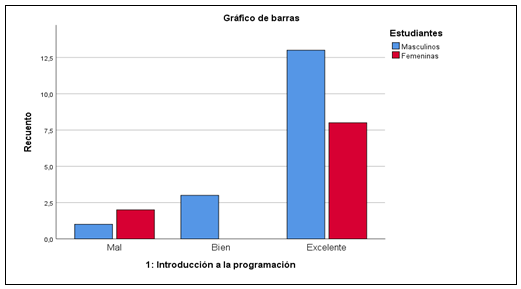
Graph. 1- Compared results in the subject Introduction to programming
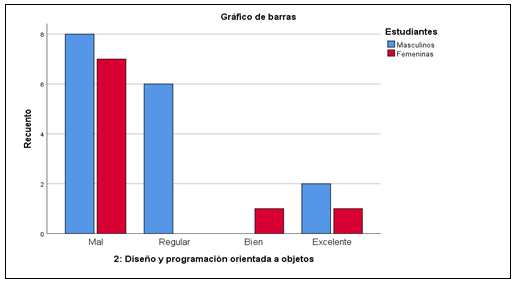
Graph. 2- Compared results in the subject Design and object-oriented programming
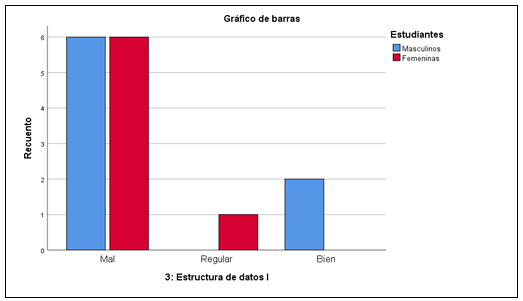
Graph. 3- Compared results in the subject Data Structure I
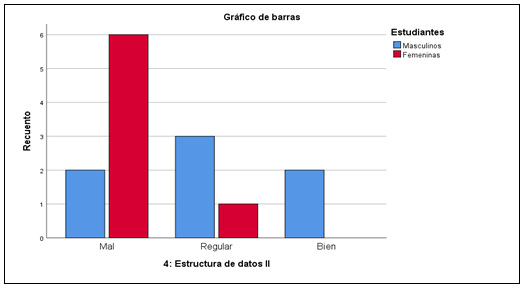
Graph. 4- Compared results in the subject Data Structure II
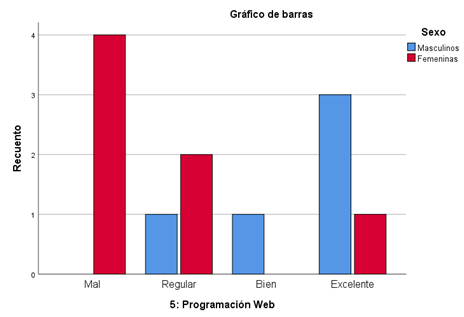
Graph. 5- Compared results in the subject Web Programming
The comparison of the median grades of women and men in the different subjects was significant in the study, as shown in graph 6.
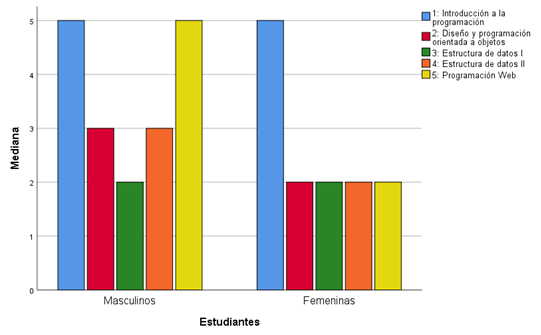
Graph. 6- Comparison of the median grades of women and men in the different subjects
Mann-Whitney U test
To check whether or not there are significant differences between the samples of male and female students regarding the variables referring to the grade obtained in each of the five subjects evaluated, the Mann-Whitney U test was applied. In this case the required conditions are met: the observations of both groups are independent and the observations are ordinal or continuous variables.
The assumed significance level is ![]() , for 95% reliability.
, for 95% reliability.
Null hypothesis H0: the difference between the medians is not statistically significant (you cannot reject H0).
Alternative hypothesis H1: the difference between the medians is statistically significant (rejects H0).
Table 1- Test statistics a
|
1: |
2: |
3 : Data structure I |
4: Data structure II |
5: Web Programming |
Mann–Whitney U |
85,000 |
57,000 |
24,000 |
9,500 |
4,500 |
W for Wilcoxon |
140,000 |
102,000 |
52,000 |
37,500 |
32,500 |
z |
0,000 |
-0.968 |
-0.663 |
-2,155 |
-2,206 |
Sig. Asymptotic (bilateral) |
1,000 |
0.333 |
0.507 |
0.031 |
0.027 |
Exact significance [2*(one-sided sig.)] |
1,000b |
.419b |
.694b |
.053b |
.030b |
a Grouping variable: students |
|||||
b Not corrected for ties. |
|||||
Exact significance outcome values [2*(one-sided sig.)] were selected as it offers better power
to detect significant differences. In such a way that, the result of the test shows, as observed in
the previous table, in the evaluations of the subjects: Introduction to programming;
Object-oriented design and programming; Data Structure I and Data Structure II, the null hypothesis is
not rejected; that is, it is accepted that there are no significant differences between the medians
of the evaluations of the subgroups of male and female students. However, the null hypothesis
is rejected in the case of the Web Programming subject, since the level of significance is ![]() and it is evident, in this case, that the median of males reaches the maximum value (5),
while that of the feminine ones have the minimum value (2).
and it is evident, in this case, that the median of males reaches the maximum value (5),
while that of the feminine ones have the minimum value (2).
The box and whisker diagram made shows the situation of the values of the medians. In the case of male students, there are no outliers. However, there are atypical female students in all five subjects: student 21 with the minimum grade in Introduction to Programming; student 26 with a grade of 5 in Design and object-oriented programming and with a 3 in Data Structure I; student 25 with 3 in Data Structure II; and the 22nd student with the highest grade in Web Programming.
This shows that in the case of female students, academic performance is generally lower than that of male students.
DISCUSSION
This study reveals, firstly, that in the sample studied, fewer women (35.7) than men (64.3) enter the career. This situation ratifies, as Mora, Coto & Villalobos (2017) point out, a scenario that has been well documented worldwide: the low presence of women in computer science careers. Although it is worth noting that, in this result, the presence of women is much higher, in relation to the findings of these researchers.
Mora, Coto & Villalobos (2017), in their research, describe the low female participation in the Information Systems Engineering career at the School of Informatics of the National University of Costa Rica (UNA). 21.3% of women started the race in 2015, while the percentage in men was 78.7. In general, they investigated recruitment (starters) and retention. They point out that the findings coincide with the results worldwide on this issue and the patterns of permanence are similar for both sexes.
For their part, Jewsbury & Specchia (2017) state that women represent 15% of entrants to Computer Science careers in 2013, against 85% of men, according to statistics from the Ministry of Education of the Argentine Republic. Regarding retention, however, the results of women in this research are higher than those of men.
It is also confirmed, in this study, that programming presents great difficulty for the majority of the students, but women have lower performance, as demonstrated by the Mann-Whitney U test.
In none of the subjects did women obtain, on average, a grade higher than that of men (in two cases it is the same). It was also possible to verify that the majority of women pass the subjects in second or third option.
It is valid to clarify that, according to the normative and methodological documents that govern Higher Education in Cuba, the student body that is not approved in a subject, has up to two more opportunities to pass.
Several authors cited in Mora, Coto & Villalobos (2017, p. 5) have documented that "women enter university computer science courses with less previous experience in programming than men" and this, among other reasons, may be the Success Factor.
An older qualitative study revealed the criteria of two interviewed students, who considered the presence of discrimination traits in their teachers. They described them as misogynistic and macho, since in classes said teachers have expressed: "women do not think logically to program" (Razo Godínez, 2008, p. 85).
It is also confirmed that, as can be read in García, Vázquez, García & González (2020), the problem is not only to increase the number of women enrolling in STEM careers, but it is necessary to apply initiatives in the different stages of the professional career to avoid dropping out of studies, as well as the incorporation and permanence in the profession because, according to (Amores, 2020, p. 7), almost twice as many women abandon these scientific fields more than men.
In the question related to discharge, the results of this study are superior to others. It was found that 70% of women completed their studies, against 27.7% of men. They contrast, for example, with those expressed by Cabrera & Quesada (2020), who reveal at the Universidad Latina de Costa Rica, between the first period of 2012 and the first period of 2018; 80% men and 20% women graduated.
It is a limitation of this research not to have applied other methods to deepen the findings on the causes of these results, based on in-depth interviews with key informants, from the context where the study was carried out and who were part of the sample.
The quantitative-descriptive research developed revealed substantial differences in the academic performance of females compared to males, in favor of the latter. In addition, the number of girls who are approved in the second or third option is the majority. In relation to graduation, the results of this research are superior to others. The graduation of women almost triples that of men, although they are still very low in both cases.
REFERENCES
Amores, L. (2020). La brecha de género: Análisis de perfiles de estudiantes y profesionales en las áreas STEM. https://gredos.usal.es/bitstream/handle/10366/143607/TFM_AmoresGarci%cc%81aLBrechag%c3%a9nero.pdf?sequence=1&isAllowed=y
Avendaño, C. K., & Magaña, D. E. (2018). Elección de carreras universitarias en áreas de ciencia, tecnología, ingeniería y matemáticas (STEM): revisión de la literatua. Revista Interamericana de Educación de Adultos CREFAL, 40(1 enero juno), 155-173.
Cabrera, S., & Quesada, A. (2020). Motivaciones de la Población Femenina en la Elección de la Carrera de Informática: Universidad Nacional de Costa Rica.https://www.researchgate.net/publication/301202059_La_motivacion_de_las_mujeres_por_las_carreras_de_ingenieria_y_tecnologia
García, A., & et al. (2020). Perspectiva de género y fomento de la diversidad en la docencia de Ingeniería del Software. Conferencia, Universidad de Salamanca, Salamanca. https://www.researchgate.net/publication/342097906
Hendel, L. (2017). Perspectiva de género. Comunicación, infancia y adolescencia. Guía para periodistas. Argentina: Fondo de las Naciones Unidas para la Infancia (UNICEF).
Hernández, R., Fernández, C., & Baptista, P. (2014). Metodología de la Investigación. Sexta edición. México D.F.: Mc Graw Hill Education.
Ibarra, R. E., & et al. (2021). Enseñanza-aprendizaje de programación de computadoras: avances en la última década. Revista Científica, 42(3), 290-303.
Jewsbury, A., & Specchia, N. (2017). Ampliando la participación de las mujeres en carreras de informática. Universidad Tecnológica Nacional Facultad Regional Córdoba. https://researchgate.net/publication/321228697_ Ampliando_ la_ participación de_ las_ mujeres_ en_ carreras_ de_ informática
Mora, S., Coto, M., & Villalobos, J. (2017). Participación de las mujeres en la carrera de Ingeniería Informática de la Universidad Nacional y su desempeño en los cursos de programación. Revista Electrónica Educare, 21(1 enero-abril), 1-22.
Nerio, A. L. (2019). ABC de la perspectiva de género. Comisión Nacional de los Derechos Humanos (CNDH). Ciudad de México: CNDH de México. https://tesvg.edomex.gob.mx/sites/tesvg.edomex.gob.mx/files/files/ACERCA%20DE/igualdad/mayo/perspectiva-g%C3%A9nero -CNDH.pdf
ONU.Mujeres. (2020). Las mujeres en ciencias, tecnología, ingeniería y matemáticas en América Latina y el Caribe. ONU.Mujeres. https://lac.unwomen.org/sites/default/files/Field%20Office%20Americas/Documentos/Publicaciones/2020/09/Mujeres%20en%20STEM%20ONU%20Mujeres%20Unesco%20SP32922.pdf
Razo Godínez, M. L. (2008). La inserción de las mujeres en las carreras de ingeniería y tecnología. Perfiles educativos, XXX(121), 63-96.
Sáinz, M., Arroyo, L., & Castaño, C. (2020). Mujeres y digitalización. De las brechas a los algoritmos. España: Instituto de la Mujer y para la Igualdad de Oportunidades. Ministerio de Igualdad. https://www.researchgate.net/publication/343306841_Mujeres_y_digitalizacion_De_las_brechas_a_los_algoritmos
Yansen, G. (2020). Género y tecnologías digitales: ¿qué factores alejan a las mujeres de la programación y los servicios informáticos?. Teknokultura. Revista de Cultura Digital y Movimientos Sociales, 17(2), 239-249.
Conflict of interests:
The authors declare not to have any interest conflicts.
Contribution of the authors:
The authors participated in the design and writing of the work, and analysis of the documents.
![]()
This work is licensed under a Creative Commons Attribution- NonCommercial 4.0
International License